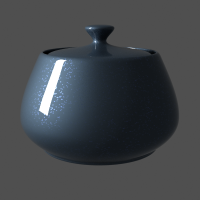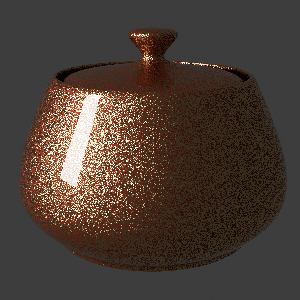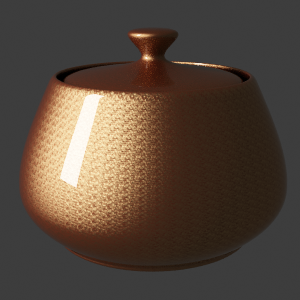This page provides information on the Car Paint Material.
Overview
Base Layer Parameters
Flake Layer Parameters
Example: The Flake Orientation Parameter
This set of images demonstrate the effect of the Flake orientation parameter. Note how lower values produce flakes more aligned with the surface normal, so that light is reflected more uniformly. Higher values produce more random flakes leading to more variation in the flake illumination.
Flake orientation is 0.0
Flake orientation is 0.1
Flake orientation is 0.3
Example: The Flake Density Parameter
This set of images shows the effect of the Flake density parameter. Note how larger values produce more flakes, but do not change the flake size.
Flake density is 0.5
Flake density is 1.0
Flake density is 2.0
Example: The Flake Scale Parameter
This set of images demonstrate the effect of the Flake scale parameter. Note how lower values scale the entire flake structure.
Flake scale is 0.005
Flake scale is 0.01
Flake scale is 0.02
Example: The Flake Size Parameter
This set of images shows the effect of the Flake size parameter. Note how larger values make the individual flakes larger, but do not change their count.
Flake size is 0.5
Flake size is 1.0
Flake size is 2.0
Example: The Flake Filtering Parameter
This example shows the effect of the Flake filtering parameter.
No filtering and no antialiasing
The result is very noisy because of the small flake size.
No filtering, Adaptive DMC antialiasing.
The result is accurate, but very slow since a lot of AA samples are required to antialias the flakes.
Flake filtering set to Simple, no antialiasing.
The filtering greatly reduces the noise, but alters the appearance of the material.
Flake filtering set to Directional, no antialiasing.
The noise is reduced and the material appearance is correctly preserved.
Example: Antialiasing Filters
Here is an example briefly demonstrating the effect of different antialiasing filters on the final result.
Note that rendering with a particular filter is not the same as rendering without a filter and then blurring the image in a post-processing program like Adobe Photoshop. Filters are applied on a sub-pixel level, over the individual sub-pixel samples. Therefore, applying the filter at render time produces a much more accurate and subtle result than applying it as a post effect. V-Ray can use all standard 3ds Max filters (with the exception of the Plate match filter) and produces similar results to the scanline renderer.
The adaptive image sampler was used for the images below, with Min/Max rate of -1/3 and the Rand option on.
Simple filtering
Flake map size is 256.
Flake maps take less than 1 MB.
Simple filtering
Flake map size is 512.
Flake maps take between 1 and 2 MB.
Simple filtering
Flake map size is 1024.
Flake maps take 5 MB.
Simple filtering
Flake map size is 2048.
Flake maps take 21 MB.
Directional filtering
Flake map size is 256.
Flake maps take 10 MB.
Directional filtering
Flake map size is 512.
Flake maps take 40 MB.
Directional filtering
Flake map size is 1024.
Flake maps take 161 MB.
Directional filtering
Flake map size is 2048.
Flake maps take 645 MB.
Coat Layer Parameters
Options
Maps
Notes
- The VRayCarPaintMtl material needs to precalculate several textures related to the flakes. Depending on the Flake map size parameter, this may take a few seconds. When working in the material editor, this may lead to slight delays between changing a parameter and the update of the material swatch.











































